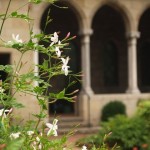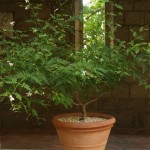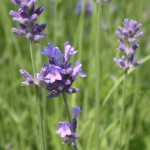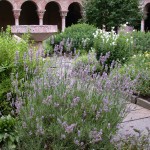Yasimin, Jessamine
The potted jasmines that perfume the gardens, and make a paradise of Trie Cloister, are in full flush and will??flower for many weeks to come. The jasmines sold as house plants by??nurseries and garden centers in the Northeast are often not the true or poet’s jasmine,??Jasminum officinale, but a more frost-tender species, Jasminum polyanthum. Sometimes called winter jasmine, it is very heavily scented, but not so sweetly fragrant as the poet’s jasmine.
Jasminum officinale has been at home in a sheltered, sunny??position in the bed under the parapet wall in Bonnefont Garden and has wintered over there for some years. The plants grown in terra rossa pots are the same species, but??are a distinct form, J. officinale forma affine.
The color of the buds on these beautiful plants is a deep pink, although the flowers, slightly larger than the species, open pure white.?? The fragrance is delightful even during the day. (Jasmines are most fragrant in the evening.??) Long prized for its scent, jasmine is still grown in great quantities at Grasse, which was already a center for perfumery in the Middle Ages.
Native to the Himalayas of western China and introduced into European gardens from the East, jasmine was a relative latecomer to those regions not in close contact with the Arab world.?? Read more »




